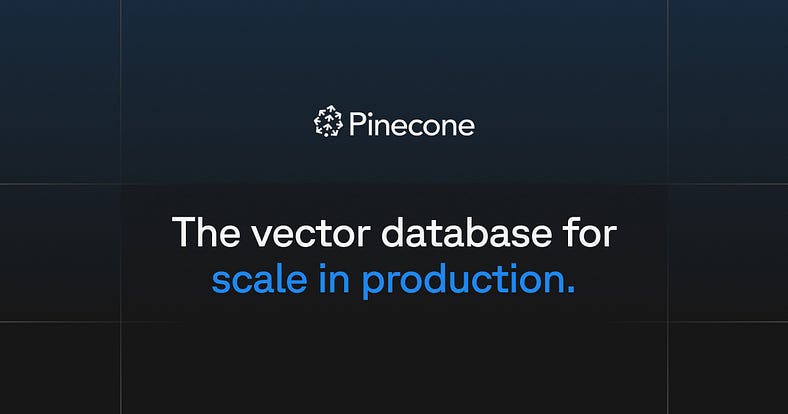Building Your First RAG (Retrieval-Augmented Generation) Chatbot: A Step-by-Step Guide to…

The world of AI is evolving, and if you’re not getting involved in the AI revolution, you’re missing out on what could be a game-changer for both your business and career. In this article, we’ll walk you through building a powerful RAG (Retrieval-Augmented Generation) chatbot using n8n and Pinecone. No coding experience is required — just follow along and you’ll have your own automated chatbot running in no time!
What is a RAG Pipeline?
Let’s start with the basics. A RAG pipeline stands for Retrieval-Augmented Generation, and it’s essentially a way to combine a retrieval process (looking up data) with generation (using AI to generate responses). Imagine asking a chatbot a question, and instead of just responding with a generic answer, it fetches the best possible information from a vector database and crafts a response tailored to your question.
For instance, if you ask the chatbot, “What’s the warranty policy?”, instead of just guessing, it’ll go to your vector database (which holds key information like your company policies, product data, and more) and generate an accurate response based on the stored data.
Setting Up the Workflow:
In this example, we’ll build an AI agent that answers customer questions by pulling relevant information from a vector database.
Step 1: Create Your Google Drive Integration
First, we’ll use Google Drive to store documents that contain your company’s policies and other important information. The first step is to set up the integration with n8n to pull in a document whenever it’s added to a specific folder in Google Drive.
Add Google Drive Node: You’ll set up a workflow where a document uploaded to a specific folder triggers the workflow.
Connect Google Drive: Using n8n, you’ll authenticate your Google account and enable API access to Google Drive, allowing your workflow to interact with it.
Step 2: Create Your Vector Database in Pinecone
Once the document is fetched from Google Drive, the next step is to vectorize the document using a vector database. For this, we’ll use Pinecone. Pinecone will take the document content and break it down into smaller “chunks” (embeddings) that are easier for the AI to process and use.
Set Up Pinecone: You’ll need to create an index in Pinecone and link it to your workflow in n8n.
Embeddings Model: Pinecone uses embeddings models to convert your text into vectors, allowing the AI agent to search through and retrieve the most relevant data when asked a question.
Step 3: Build the RAG Chatbot Using n8n
Now, the fun part begins! We’ll integrate n8n’s AI Agent with the Pinecone vector store so it can retrieve the correct data when asked a question.
Create the AI Agent Node: In n8n, we’ll add an AI agent node. This node is powered by large language models (LLMs) like GPT-4 or Claude 3.5 Sonnet, which can be connected to Pinecone to pull relevant documents and generate responses.
Connect Chat Trigger: Use a chat trigger to initiate a conversation with the agent. When a user asks a question, the chatbot will retrieve the necessary information from Pinecone and generate a custom response.
Step 4: Test the Workflow
After setting up the agent and its tools, it’s time to put it to the test. The AI agent should now be able to:
For example, ask the chatbot, “What is our warranty policy?”, and it will fetch the answer directly from your knowledge base stored in Pinecone.
Key Concepts in RAG and Vector Databases
Let’s break down some of the core ideas you’ll be working with:
Vector Database: A vector database is a type of storage system designed to handle multi-dimensional data, such as words, images, or even complex documents. Each entry in a vector database is a “vector,” which is a list of numbers representing a piece of data. In the context of our RAG chatbot, these vectors represent chunks of your documents, such as FAQ or policy data.
Embeddings Model: An embeddings model converts text or other data types into vectors. This is the process of turning your documents into something the AI can understand and use effectively.
AI Agent: An AI agent is an intelligent entity that can think and respond autonomously based on the information it retrieves. It’s the brain behind the chatbot, utilizing various tools (like Pinecone) to get the job done.
Why RAG is a Game-Changer
The beauty of RAG lies in its ability to retrieve highly relevant information from large datasets or databases and generate a contextually accurate response. By combining a vector database and a large language model (LLM), RAG offers a dynamic and powerful way to build intelligent systems that can learn and adapt based on their inputs.
With n8n as the workflow automation tool, you can easily integrate RAG into your own workflows, whether for a chatbot, customer service automation, or even as a personal assistant that fetches the information you need on-demand.
Conclusion
Building your first RAG chatbot using n8n and Pinecone is not only an exciting learning experience but also a practical solution to automate and enhance your business processes. Whether you’re creating a chatbot to automate customer support or building an internal tool to retrieve information, the combination of RAG and a vector database can supercharge your operations and provide real-time answers to important questions.
Join the AI University Community: To access more templates, tutorials, and hands-on guides for building AI agents, join the AI University community here.
Ready to start automating with n8n? Let’s get building!